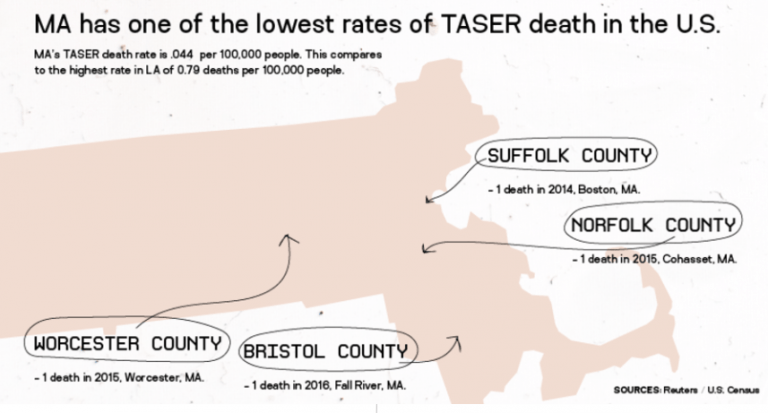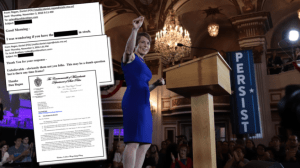Emerson Students Team Up with Alternative Media to Examine Weapons in Massachusetts
By David Ertischek ’01
Emerson’s Journalism Department and Engagement Lab teamed up with several noteworthy nonprofit media outlets during the 2018-2019 school year to expose corruption around gun sales throughout Massachusetts.
By using the Freedom of Information Act (FOIA), Emerson students worked with the Boston Institute for Nonprofit Journalism (BINJ) and MuckRock, to build more community engagement and data reporting.
“The stories are on court rulings and gun sellers, two stories on tasers,” said Paul Mihailidis, associate professor of Journalism, currently on sabbatical and working at Catholic University of Argentina. “There’s some stories on the process of how we did the work. A few infographics. The guide of the project is basically how we engaged the community using FOIA. The premise is the FOIA is underused.”

The project was a result of an Online News Association grant, and included two Emerson classes: one on data journalism, and the other on civic media. The research project culminated on June 18 with the launch of the website makefoia.work. The website includes all of the reporting and syllabi in hopes that other journalism departments and students learn how students used FOIAs.
The goal was to make the FOIA process more transparent and show how FOIAs can enhance reporting. That complementary effect was displayed by Chris Faraone, who co-founded BINJ, and is the associate publisher for DigBoston. Faraone was the lead writer of in-depth articles about gun laws, limits, and licensing in Massachusetts for DigBoston and BINJ that featured the project’s research:
In one discovery that emerged from documents secured via public records requests, the team revealed that certain law enforcement agencies continued doing business with companies that Attorney General Maura Healey found violated state law. In some cases, individuals from those businesses donated to politicians, including Governor Charlie Baker, while still under investigation.

Mihailidis also stressed the importance of supporting often under-resourced alternative media outlets such as BINJ and DigBoston.
“There is a need to have a shared experience. Local media can collaborate, and students need experience,” said Mihailidis, who is working with Faraone to create a 2020 spring semester seminar on a new topic that they will co-teach.
“We’re using FOIA to engage communities. That’s the real question: Can we use this process to make more engaged and community-focused journalism and show that process to do that?” asked Mihailidis.
The project also got students out from the stereotypical journalism class of beat reporting. Mihailidis said the classes presented creative ways to embed more journalists into communities.
Openly critical of college journalism programs, Faraone found the project to be remarkable.
“I can’t stress enough how great it was to collaborate with Emerson journalism students and the Engagement Lab, as well as our other partners from MuckRock. They really handled a lot of the nuts and bolts — from research to engagement — and let my team knock out the features, which is what we do best,” said Faraone.
The project has also had a real-life impact, as Faraone was contacted by aides of lawmakers on the Joint Committee on Public Safety and Homeland Security.
“Specifically, they found our work on tasers and town-to-town firearm registration discrepancies to be eye-opening,” said Faraone. “On that prompt, we have done our best to make sure as many legislators as possible see our work, and we plan on turning over any and all research in the event that a specific piece of legislation ultimately come out of this.”
Categories